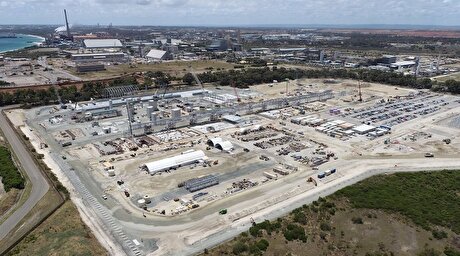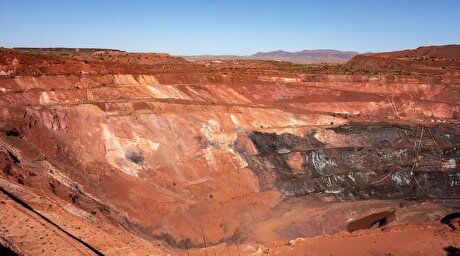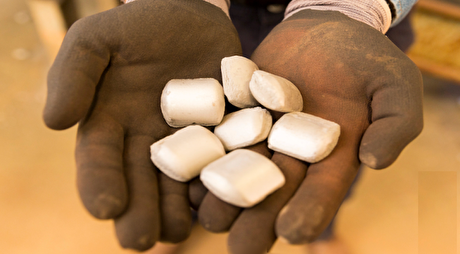
OPEC Reports Increase in Iran's December Oil Output

Crude oil output of OPEC's third largest producer averaged 3.82 million barrels per day last month, an increase of 13,200 bpd from November, OPEC said in its monthly report, citing secondary sources.
Iran has accepted a production ceiling of 3.8 million bpd as part of a deal between OPEC and 10 other suppliers, including Russia, to curtail output by 1.8 million barrels a day to raise prices and bring down inventories.
The country's own data submitted to OPEC showed a decrease of 67,000 bpd production last month to 3.811 million bpd.
OPEC uses two sets of figures to monitor its output—figures provided by each country, and secondary sources which include shipping, oil consultancies and industry media.
Iran's output averaged 3.81 million bpd last year, the group said, including 3.82 million bpd in Q4, 3.83 million bpd in Q3 and 3.79 million barrels in Q2.
The combined production of the 14-member group reached 32.41 million barrels a day in Dec. compared to 32.37 million bpd in the month before.
The biggest cuts came from Venezuela (82,000 bpd), Qatar (12,100 bpd) and Saudi Arabia (10,900), but reductions were offset by additional outputs from African producers, including Nigeria (75,000 bpd), Angola (44,800 bpd), Algeria (30,300 bpd) as well as Iran and Iraq.
"Preliminary data indicate that global oil supply increased by 0.4 million bpd to average 97.49 million bpd in Dec. compared with the previous month," the report said.
OPEC kept its forecast for oil demand growth in 2018 unchanged at 1.53 million bpd, reaching 98.51 million bpd.
Should OPEC keep pumping at December’s level and other things remain equal, the market could move into a deficit of about 670,000 bpd next year, suggesting inventories will be drawn down further, Reuters said on Thursday.
Oil Price
Iran Heavy, one of the country's main crudes for export, traded at $60.86 per barrel last month, up $1.6 or 2.7% month-on-month, the report said.
The Iranian crude averaged $51.71 a barrel in 2017, up 30% in the previous year that saw prices plummet to their lowest levels in more than a decade. Oil fell from above $110 a barrel in mid-2014 to below $30 in early 2016.
The OPEC basket of 14 crudes rose $1.32, or 2.2%, to settle at $62.06 per barrel on a monthly average. Compared to the previous year, OPEC's basket price value has settled 28.6%, or $11.67, higher, at $52.43 a barrel.
Global markets were supported last year by an extension of the production cut agreement through the end of 2018 as well as tensions in the Middle East and supply disruptions in the US and elsewhere.
The deal is subject to revision if prices go too high, which situation could prompt producers outside of the deal, particularly the US shale industry, to raise output and disrupt global markets.
Russia has already discussed the possibility of pulling out of the deal as Moscow faces pressure from domestic producers to ramp up output.
Lukoil chief executive, Vagit Alekperov, said last week that Russia should start exiting the crude cut accord if prices remain at $70 per barrel for more than six months.


Caterpillar sees US tariff hit of up to $1.5 billion this year

Australia pledges $87M to rescue Trafigura’s Nyrstar smelters in critical minerals push

SAIL Bhilai Steel relies on Danieli proprietary technology to expand plate mill portfolio to higher steel grades

Alba Discloses its Financial Results for the Second Quarter and H1 of 2025

Fortuna rises on improved resource estimate for Senegal gold project

Tianqi Lithium Australia JV says it is prioritizing long-term viability of refinery

Fresnillo lifts gold forecast on strong first-half surge

Copper price slips as unwinding of tariff trade boosts LME stockpiles

Why did copper escape US tariffs when aluminum did not?

New research reveals source of world’s richest lithium deposits

Century Aluminum to invest $50M in Mt. Holly smelter restart in South Carolina

Australia to invest $33 million to boost Liontown’s Kathleen lithium operations

Glencore warns of cobalt surplus amid DRC export ban

SSR Mining soars on Q2 earnings beat

A Danieli greenfield project for competitive, quality rebar production

China limits supply of critical minerals to US defense sector: WSJ

Alba Hits 38 Million Safe Working Hours Without LTI

Advanced cold-rolled strip for China’s New Energy Vehicle market

Codelco seeks restart at Chilean copper mine after collapse

Century Aluminum to invest $50M in Mt. Holly smelter restart in South Carolina

Australia to invest $33 million to boost Liontown’s Kathleen lithium operations

Glencore warns of cobalt surplus amid DRC export ban

SSR Mining soars on Q2 earnings beat

A Danieli greenfield project for competitive, quality rebar production

China limits supply of critical minerals to US defense sector: WSJ

Alba Hits 38 Million Safe Working Hours Without LTI

Advanced cold-rolled strip for China’s New Energy Vehicle market

Codelco seeks restart at Chilean copper mine after collapse














